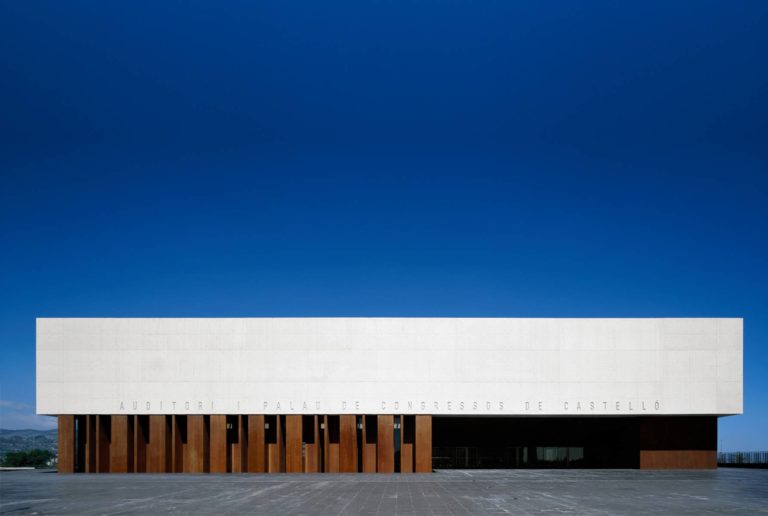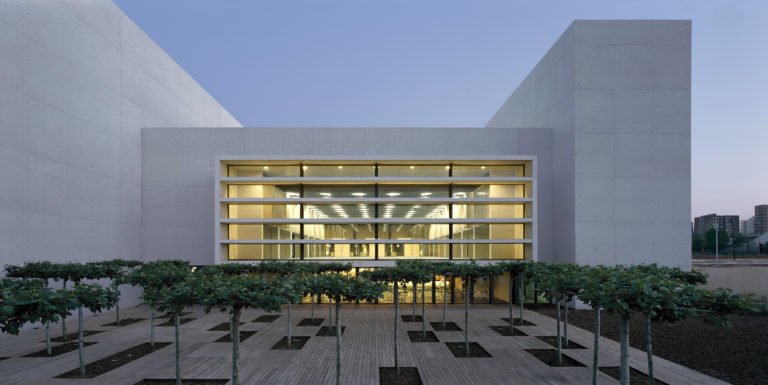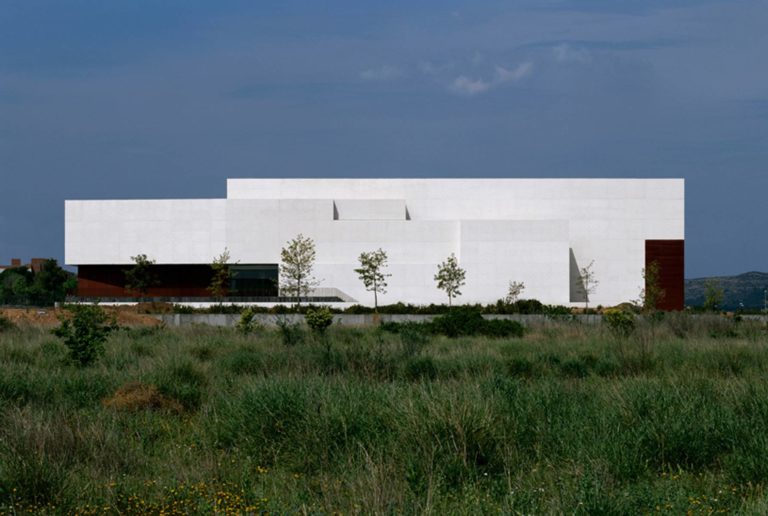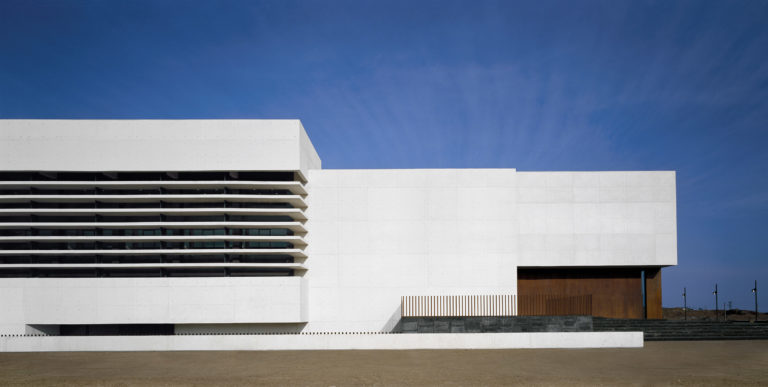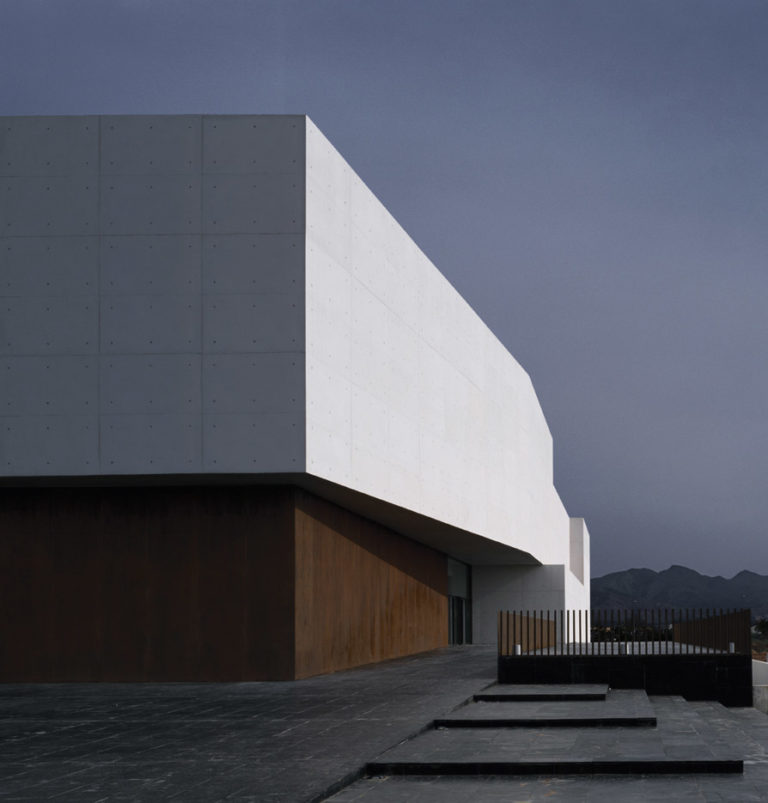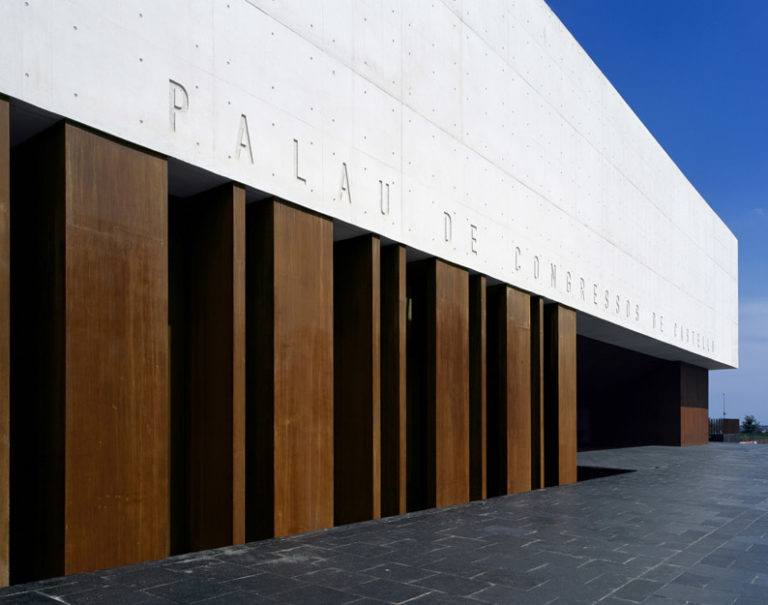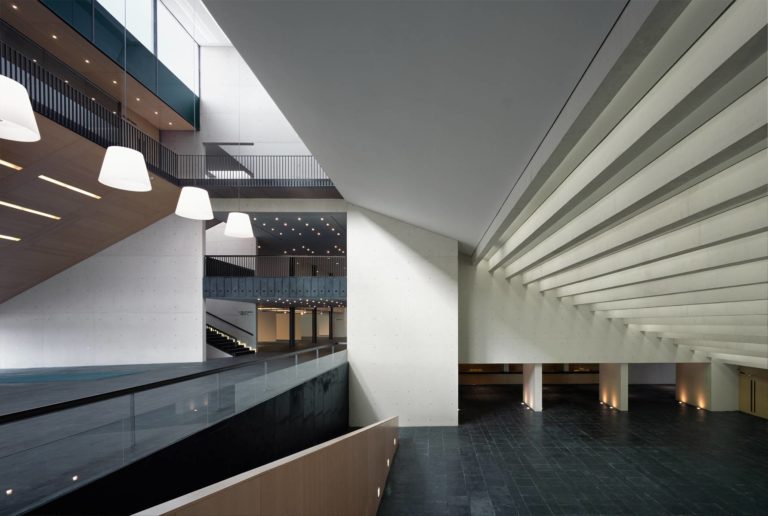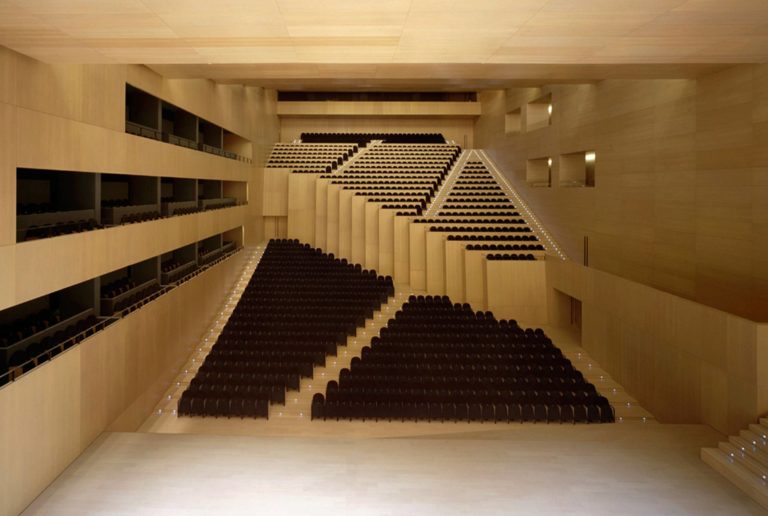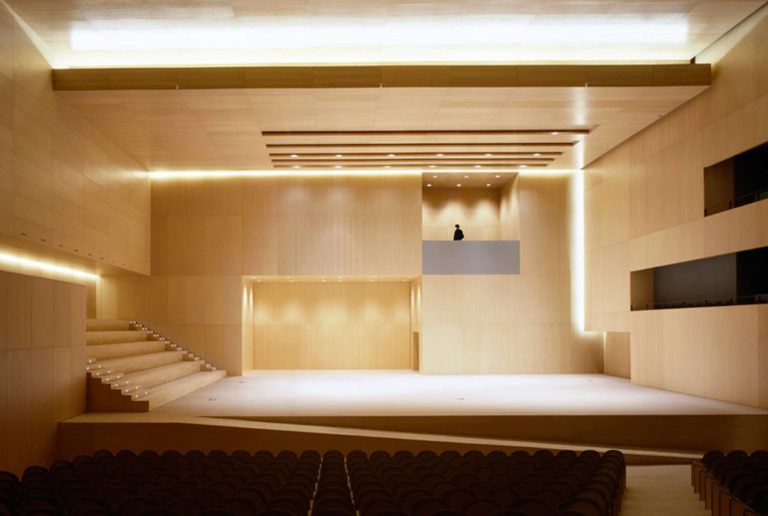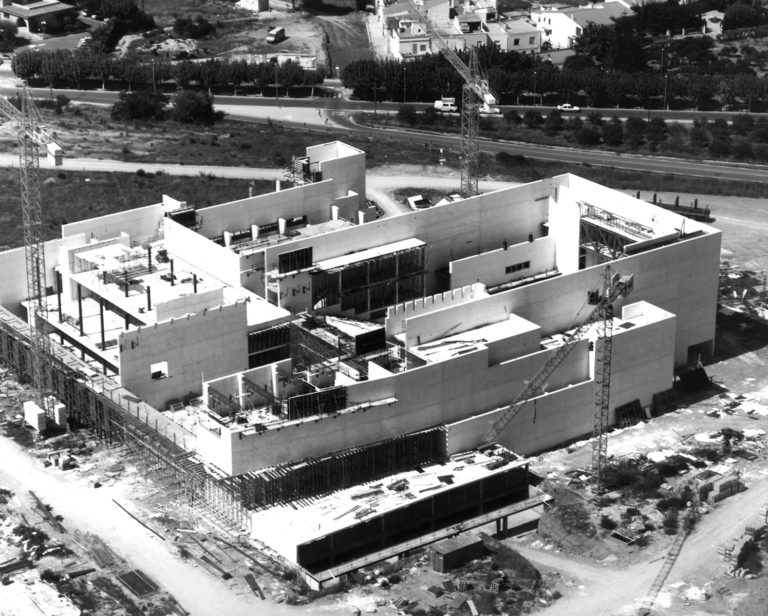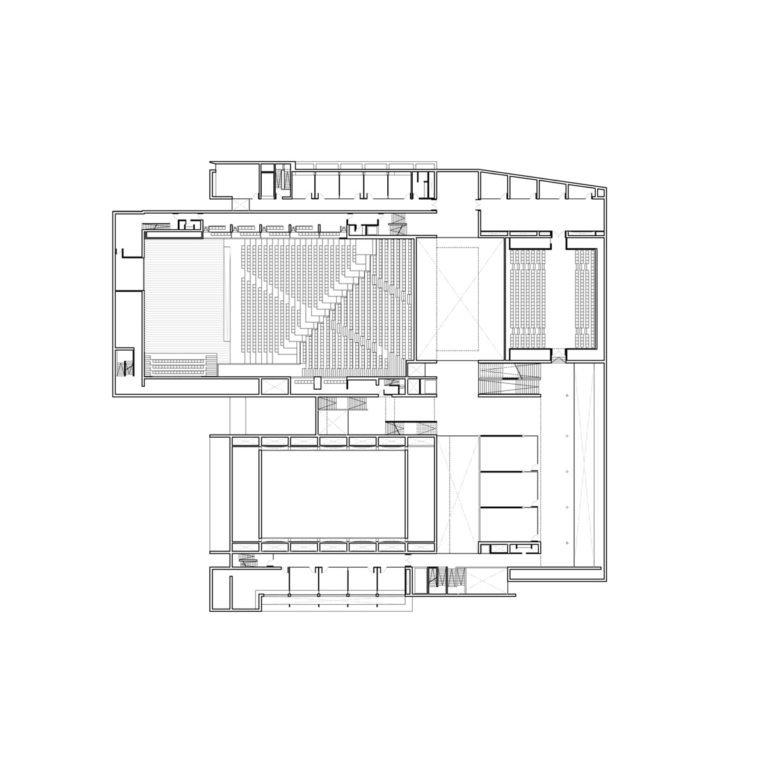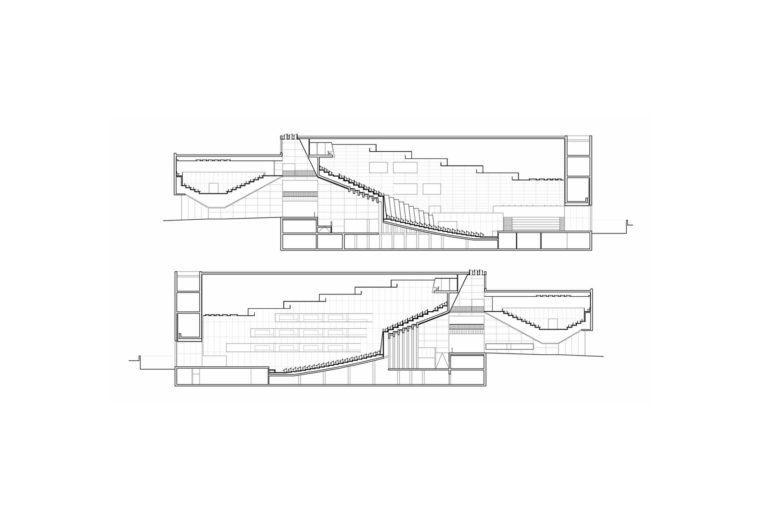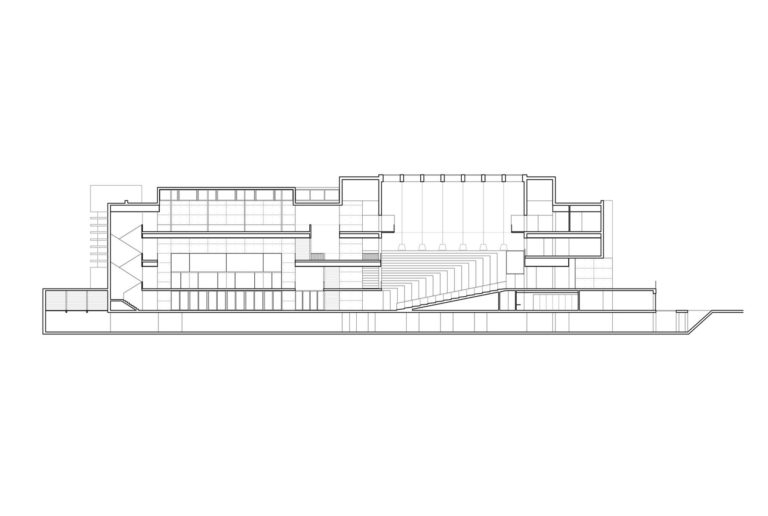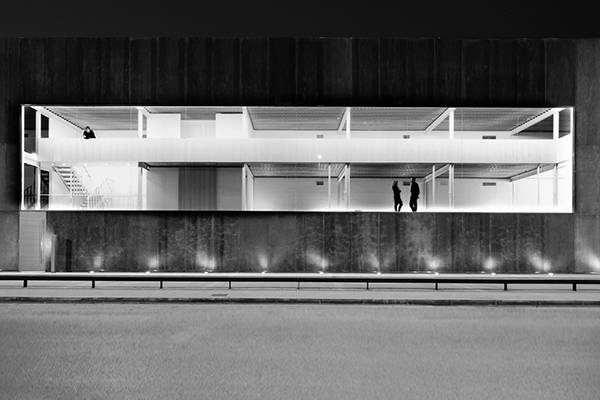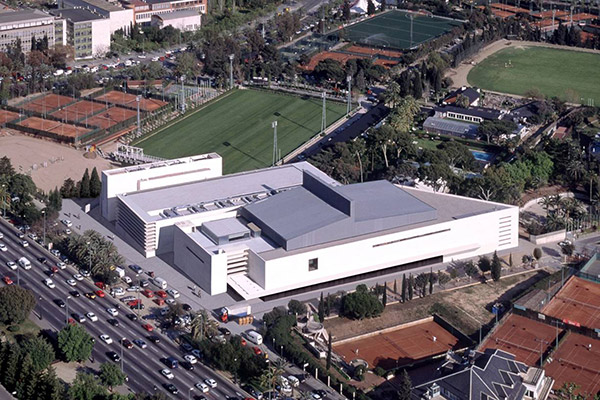Auditorium and Convention Center in Castellón
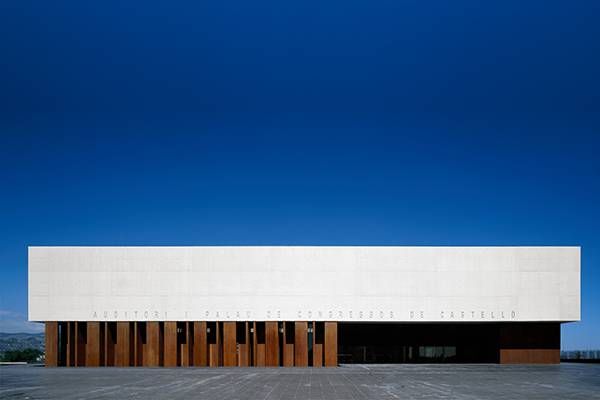
Auditorium and Convention Center in Castellón
Auditorium and Conference Centre was erected as an icon building for the consolidation of Castellon as a progressive city with projection in the social and cultural fields.
The building promotes an urban area in expansion, joining together the orbital road, the surroundings of the Lidon Hermitage and the growing city. Together with the big park surrounding it, it contributes to creating a homogenous city in its growth.
The Auditorium maintains a close relationship with the park, reminiscence of the Mediterranean: sand dune, orange trees, stretches of water and land, taking us toward the building that receives us with its great outsider atrium, allowing a smooth transit into the inside. A sloped platform comes out of the building to welcome us, having a reception hall before actually entering inside. The rest of the building connects with the park by means of an area like a depressed patio, with a clear historical reference to spatial references.
The process to give a solution to the functioning of such an extensive programme as that of the Auditorium and Conference Centre, is based on the consideration of the various areas as independent Systems interconnected by a continuous space backed up by the Light.
The discovery of the building, as we enter into the same, is one of the basic premises. The longitudinal section, present right from the first sketches, has generated the Project to a great extent.
The transition of exterior-interior areas is produced underneath the chamber music hall and underneath the main hall, the area being illuminated by overhead Light.
The building was constructed with just one type of material: white concrete, which is both skeleton and the final shape. In this way the structure is a spatial support and not physical…
The light comes in bathing the concrete, obtaining a fluidity that allows its comprehesion as a continuous space.
The building is constructed using independent Systems, and this is the reason for the asymmetry of the center. In this project, all the exits flow together to the same point, the great Foyer, located below the upper pit, using an internal cascade pathway, which additional leads to a large multi-purpose hall. This allows freeing a wing to bring together facilities such as the musicians and orchestra changing rooms, offices, materials store rooms, resting, tuning, protocol and press areas.
In the symphonic hall, with a capacity for 1.300 persons, the two asymmetric pits come together, living way to the boxes, linked on the first level with the institutional area. The great stage has a lateral extension with skating sufficient for 100 persons, who thus become closely involved to the stage itself.
This hall, just as the rest of the building, does not lose its relationship with the outside, having at one extreme end a large curtain which, when raised, offers a magnificent view of the Madalena Mountains from the hall itself.
The chamber music room, suspended above the main access, has a capacity for almost 400 persons. With a “V” section, it enjoys natural Light.
The multi-purpose room, or Magic-box, is designed for any type of activity connected with the main hall, although remains independent from the same. This hall can be extended towards the front area, joining an area housing exhibitions, etc.
The last independent system is made up of a series of room that can either be set up for independent use such as for congress commissions, or opened up to join the rest of the building. Also in this north-facing body of the building Castellón Cultural have their offices.
All these systems are knitted together by the transversal section, conceived as a continuous flow joining together the entire programme.
Exhibitions
2012
- SPANISH ARCHITECTURE 1975-2010. '35+ BUILDING IN DEMOCRACY'. New Ministers gallery in Madrid.
